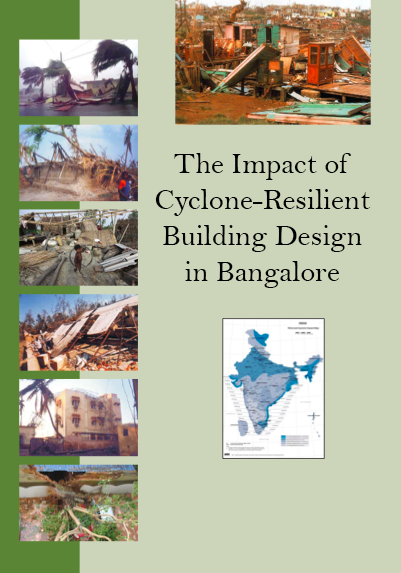The Impact of Cyclone-Resilient Building Design in Bangalore
Read latest blogs and articles from Housystan

The Information mentioned here was last updated on:
4/12/2025The Impact of Cyclone-Resilient Building Design in Bangalore
Bangalore, often referred to as the Silicon Valley of India, is rapidly growing, not just in its tech-based economy but also in terms of urban development. While the city is not traditionally in the path of tropical cyclones, recent climate changes have led to unpredictable weather patterns that could pose risks to non-resilient structures. Cyclone-resilient building design is therefore becoming an increasingly important concept as urban planners and builders aim to protect inhabitants and infrastructure from potential natural disasters.
Understanding Cyclone-Resilient Building Design
- Verified Tenants/Buyers
- Unlimited Property Listing
- Zero subscription/charges fee
Cyclone-resistant architecture involves the integration of specific design features and materials that can withstand high winds and heavy rainfall. Here’s what makes a building cyclone-resilient:
- Aerodynamic Shapes: Structures with rounded edges and roofs help minimize wind pressure. This reduces the chances of roofs being lifted or walls collapsing.
- Reinforced Materials: Use of high-strength concrete, reinforced steel, and impact-resistant glass adds durability. These materials prevent structural failure during storm surges and strong winds.
- Secure Foundation: Buildings with deep, strong foundations are less likely to shift or collapse in the face of strong gusts. Anchoring to solid rock when possible offers additional stability.
- Storm Shutters and Doors: Installing these can protect glass windows and prevent interior damage from debris or high winds.
Why Cyclone-Resilient Design Matters for Bangalore
While Bangalore's geographic location does not traditionally classify it at high risk from cyclones, the city’s rapid urbanization and changing climate patterns necessitate proactive measures. Here's why adopting cyclone-resilient building practices is essential:
1. Climate Change Reality: The Indian Meteorological Department notes an increasing trend of unpredictability in weather patterns, which can lead to extreme events beyond historical records.
2. Urban Population Density: With millions calling Bangalore home, densely populated regions would face significant challenges in the event of a cyclone. Adequate housing must prioritize safety to protect lives.
3. Economic Impact: A cyclone impacting a tech and economic hub like Bangalore could lead to financial losses. Protective design measures can help mitigate potential business disruptions.
4. Infrastructure Longevity: Structures designed for resilience can withstand harsh conditions over time, thus reducing maintenance costs and ensuring sustainable urban development.
Incorporating Cyclone-Resilient Features
Effective cyclone-resilient buildings incorporate a variety of design features to enhance protection from extreme weather. Here are some key practices that can be utilized in Bangalore:
- Elevated Structures: Raising buildings above potential flood levels protects against flooding, which can accompany cyclonic weather.
- Wind Breaks and Buffers: Natural or constructed barriers around properties can decrease wind force on buildings.
- Adaptive Landscaping: Implementing trees and shrubs strategically can reduce wind speed and buffer against flying debris.
- Drainage Systems: Effective water management systems prevent waterlogging and water damage, directing stormwater away from property foundations.
Urban Planning and Policy
Ensuring cyclone-resilient buildings extends beyond individual projects to broader urban planning policies. Here are some considerations for Bangalore’s urban planners:
- Building Codes and Regulations: Introducing specific codes for cyclone resistance ensures that builders comply with safety standards.
- Incentives for Resilient Design: Offering subsidies or tax benefits for adopting resilient designs can encourage developers to integrate these practices.
- Public Awareness Campaigns: Educating the public, builders, and architects on the benefits and necessity of cyclone-resilient design encourages widespread adoption.
- Research and Development: Continuous R&D in building materials and design innovations ensures the city stays updated with the best practices.
Technology and Innovation
Leveraging technology can aid in the design and implementation of cyclone-resilient buildings. These technological advancements can be crucial:
- Simulation Software: Advanced modeling can predict the impact of high winds and rain on different building structures, guiding improved design.
- Smart Materials: Materials that automatically adjust properties under stress can further safeguard buildings against cyclones.
- Real-Time Monitoring Systems: Technologies that monitor structural integrity and weather conditions in real-time offer preemptive alerts and enable faster response times.
Resourceful Urban Adaptation
As Bangalore continues to expand, urban planners must prioritize structures that withstand potential climatic hazards. Cyclone-resilient design should not only focus on homes but also integrate into commercial buildings, educational institutions, and healthcare facilities to protect the broader community.
- Community Shelters: Establishing designated cyclone shelters within urban environments, constructed with resilient principles in mind, ensures population safety during emergencies.
- Retrofitting and Renovation: Many existing buildings may require updates to align with new resilience standards. Retrofitting offers an economical solution to enhance the durability of older structures.
Future Outlook
The need for cyclone-resistant infrastructure in Bangalore signals a broader trend toward more adaptive and sustainable urban environments. By laying the groundwork for resilient building practices today, the city can safeguard against unforeseen weather events tomorrow. Integrating resilience into the DNA of Bangalore’s urban fabric ensures both immediate safety and long-term sustainability, allowing the city to thrive even amid environmental challenges.
Related Reading and Resources
To delve deeper into cyclone-resilient practices, consider exploring resources that focus on sustainable construction and urban development:
- Sustainable Architecture Books and Journals: Titles focused on climate-adaptive design offer insights for architects and builders.
- Government Documentation on Urban Planning: Local policies can provide guidelines and best practices for building resilient urban spaces.
- Online Courses and Webinars: Platforms offering courses in sustainable design and climate resilience can be instrumental for professionals seeking expertise.
In a rapidly changing world, Bangalore’s embrace of cyclone-resilient design not only protects its current residents but also paves the way for a safer, more secure urban future.